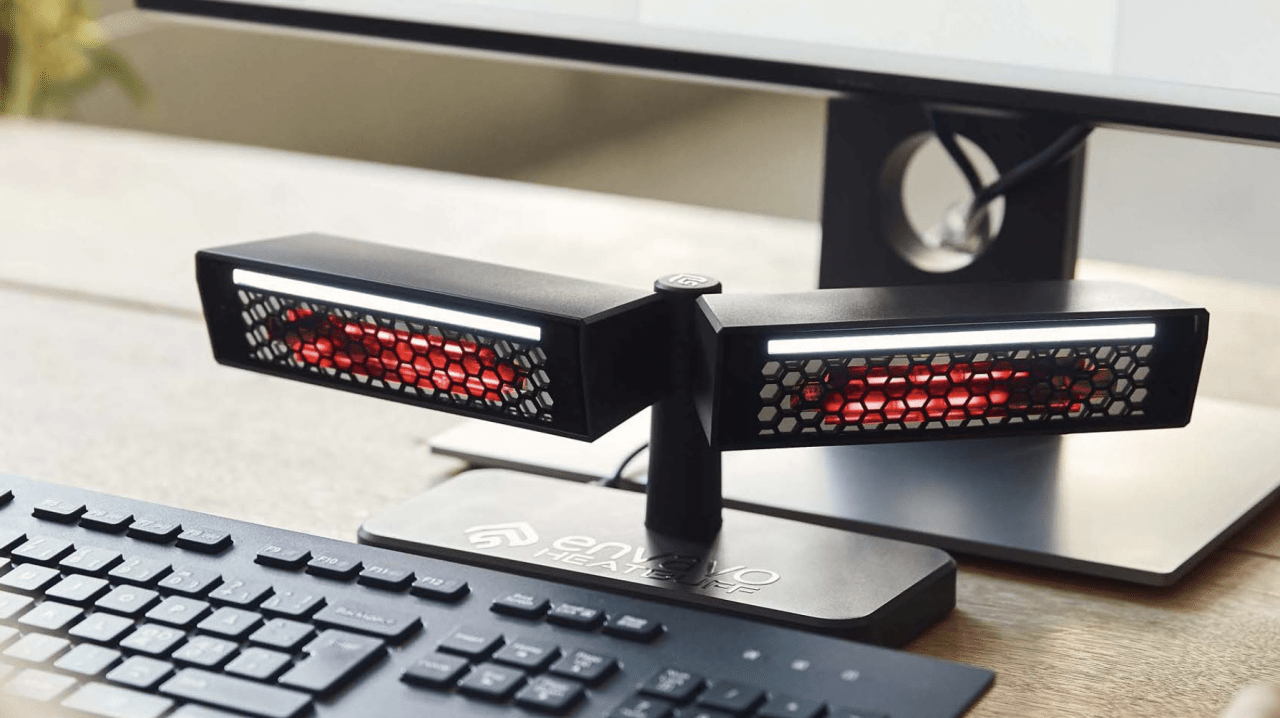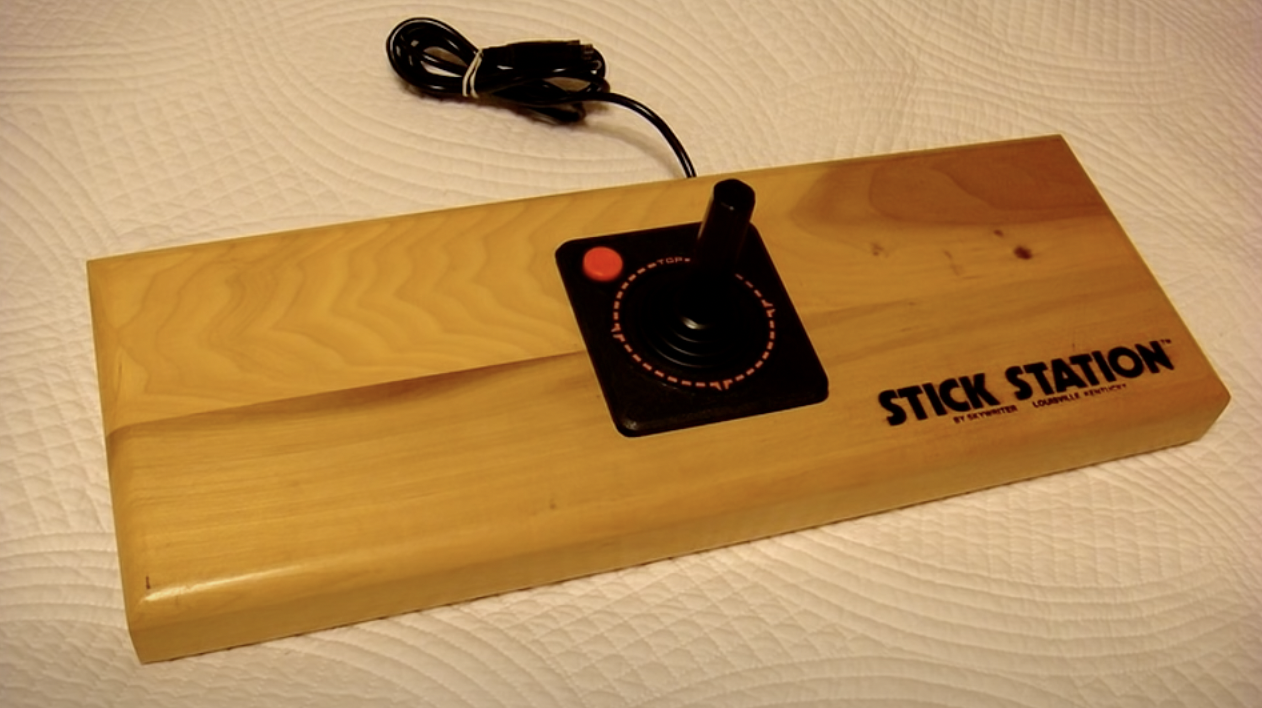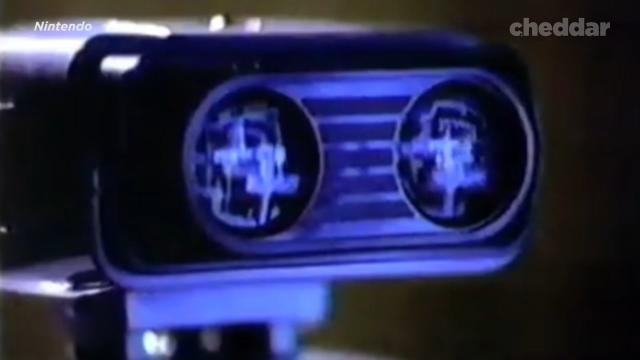I love extraneous video game peripherals. If I didn’t have a family, I would just surround myself with plastic guitar controllers, useless motion-control extensions, and every weird joystick ever invented. Just fill my home with ‘em — the more ridiculous they are, the better.
The 12 video game add-ons that follow represent some of the weirdest and most interesting peripherals ever released, from the good (DK Bongos), to the bad (Atari Mindlink), to the over-indulgent (Steel Battalion controller).
NES’s R.O.B the Robot
R.O.B. (your friendly Robot Operating Buddy) was weird not so much for what it is — a poorly functioning glorified claw gabber you can program using the NES gamepad to do…basically nothing interesting, unless you are really into picking up small objects — but because of what it represented. In the wake of the video game crash of the early ‘80s, retailers were wary of getting burned by stocking more pricey consoles that wouldn’t sell. So Nintendo produced Robbie to fool retailers into thinking they were selling an awesome educational toy (that also happened to play video games). It worked, but Robbie was soon relegated to the scrap bin, a sacrifice that had to be made so Mario could rise triumphant.
‘Tony Hawk: Ride’ skateboard controller
In video game history, 2009 was the intersection of the “motion control all the things!” and “fake plastic instruments everywhere” eras, so the Tony Hawk skateboard peripheral must have seemed like a no-brainer. Released with Tony Hawk: Ride, the plastic skateboard was meant as a real controller, not a gimmicky collectible: It featured two accelerometers, four motion sensors, and you couldn’t play Ride without it. This was serious gaming stuff, and the $US120 price tag reflected it. Ride and the controller were not successful, and that’s an understatement. Non-intuitive, confusing, and just kind of lame, the controller and game were relegated to the bargain rack, where they remain to this day.
DK Bongos
Packaged with GameCube games Donkey Konga and DK Jungle Beat in 2004, DK Bongos were the opposite of the “serious” Tony Hawk controller — they were cheap (for the game and controller), silly, and they actually worked. You could control Donkey Kong adequately just with drum hits and handclaps, and they made DK Jungle Beat’s rhythm matching into a party.
Envavo Heatbuff

The Envavo Heatbuff is tiny infrared heater designed to warm up your fingers as you type while not heating up your computer or keyboard. I have questions both practical and philosophical. Practical: How does it warm up my mouse hand? Philosophical: If your lifestyle is such that you can afford bespoke PC gaming peripherals, shouldn’t you be able to afford to adequately heat your home? Third, bonus question: Why is Envavo’s website about online gambling, with no mention of their successful kickstarted gadget?
Atari 2600 Stick Station

An unusual accessory from the earliest days of console gaming, the Atari 2600 Stick Station is a plank of wood you put your Atari controller into. The ergonomics of those old joysticks were pretty terrible, and it would have helped to have them on a firm base, so the Stick Station wasn’t totally useless. But on the other hand, it’s a plank of wood. It was only available for a short time in 1984, and low sales mean it is today one of the rarest video game peripherals of all. But again, it’s just a plank of wood.
Azeron Cyborg gaming keypad
I’ve spent two-and-a-half hours trying to understand what the Azeron Cyborg keypad is and how it works, but I’m coming up blank. Maybe it is a very complicated mouse. Maybe it is the next step in human-cyborg evolution. Maybe everyone who kills me in Counter-Strike is using one of these controllers, and it’s not because I suck. Life is full of mysteries.
Wii Fit Balance Board
Video game companies cannot seem to shake the weird idea that gamers want to stand up while they’re playing video games, when all evidence suggests they want to become one with their couches. There have been countless pads, boards, and other “active” controllers released since 1987, when Nintendo’s Power Pad for the game Track and Field came out. Most of them have been terrible, but the Wii Fit balance board is an exception. It was designed for a fitness game, Wii Fit, and not to try to trick anyone into standing up because it would make gaming more “immersive.” Plus, it worked really well for what it was (a glorified scale).
Aura Interactor
This wearable force-feedback vest was way ahead of its time. It converted sounds into vibrations and allowed players to feel kicks, hits, bullets, explosions, and presumably gentle caresses, way back in 1994. Compatible with Super NES and Sega Genesis, the Interactor was generally positively reviewed and sold over 400,000 units at a price point of around $US100. It was not, however, the first of a long-line of constantly improving wearable haptic video game accessories. My guess is rumbling controllers killed interest in further iteration of the concept, until VR came along and dug it out of the grave.
Booster Boy
In a way, the Saitek Booster Boy was ahead of its time. In another way, it was really, really dumb. This add-on clamped a magnifier, comically large buttons, and a sound amplifier onto your Gameboy, giving you a larger screen, louder sounds, and bigger buttons, while simultaneously devaluing the main selling point of the Gameboy: its portability. Booster Boy made a handheld system into an arm-held system, which is a little like what the Nintendo Switch does. If you squint. And don’t think about it too hard.
Rez Trance Vibrator
Back in 2001, esoteric, trippy PlayStation 2 game Rez offered Japanese gamers a vibrating peripheral to go along with their already vibrating controllers. According to its developer, the Trance Vibrator was not created with anything sexual in mind, but that’s where everyone’s mind went anyway. This thing apparently vibrates really strongly, too. It apparently works really well. At video games.
Atari Mindlink
The Atari Mindlink was scrapped before release, but I’m including it here because I love the hopeful over-reach of early video game consoles. This Atari 2600-connected headband purported to read your thoughts and let you play video games with your mind. Sure guys.
It actually worked by reading muscle movement in your forehead. Since “play games with your eyebrows” isn’t nearly as sexy as playing them with your mind, the Atari Mindlink was never brought to market. That it gave early players wicked headaches didn’t help either.
Steel Battalion Controller
I want a Steel Battalion controller so badly. This testament to over-indulgence incorporates 44 input points, including three foot-pedals, rows of switches and buttons, dials, throttle controls, dashboard lights, and more. And it was produced to play only one thing: Capcom’s 2002’s mech battle game Steel Battalion. At the time, the game and controller retailed for $US200, but it’s twice that now on the secondhand market. Around $US400 for a 20-year-old video game and a controller is a bit much, and I don’t even like mech games. But there are so many buttons.

Leave a Reply